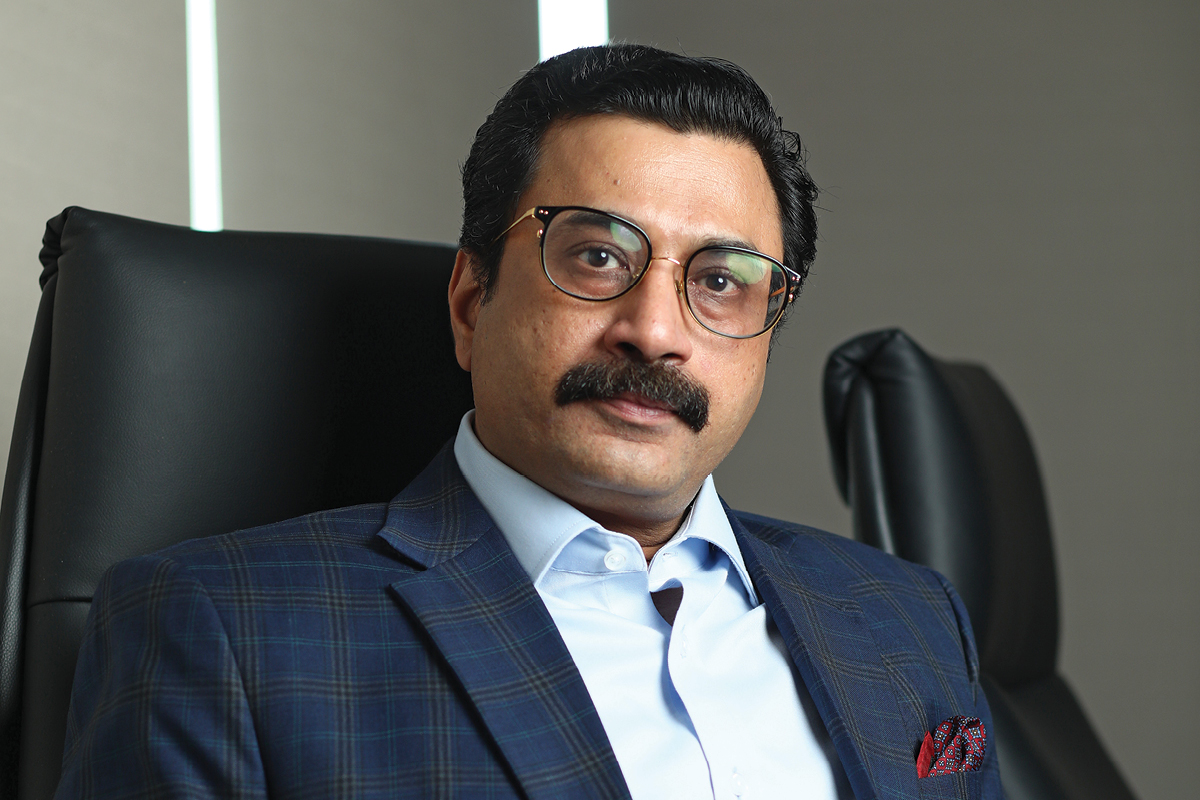This was an opportunity too good to ignore, thought Rohit Katyal. The potential for high-rise development in India, with its large population and rapid economic growth, seemed limitless, except for two impediments that he was sure could be overcome.

Executive Director and CFO at Capacit’e Infraprojects, Rohit well understood that the Indian construction industry lacked two important ingredients for success in high-rise developments – the latest in construction technologies and the corresponding skills to see projects through to completion.
“When we incorporated the company, we believed that housing was a fragmented segment in the overall umbrella of infrastructure and, therefore it carried a huge opportunity, from a skills perspective and through the introduction of technology into the segment,” he explains.
“So, we decided to get into building construction, including residential, commercial, health care, hospitality and so on. We thought that super high-rise was just around the corner, and if we took advantage, perhaps four or six years later we could be a distinct leader in that category.”
India’s construction industry is roughly divided into private and government sectors. According to Rohit, government contracts now lead the way in the use of new technology and are pushing the boundaries of project sizes.
“The advent of RERA two-and-a-half years ago, and then the implementation of the Goods and Service Tax (GST), has led to consolidation in the sector, and more disciplined developers are enjoying the benefits and advantages of that consolidation. Furthermore, GIC, one of the reserves management entities of the government of Singapore, Canadian pension funds and the likes of Blackstone are playing a bigger role. This was non-existent just seven years ago in private sector real estate development in India,” says Rohit.
“Seven years ago, the use of technology in the construction industry was very limited, but gradually the industry has moved away from conventional modes of construction towards more technology-based construction.”
Rohit and his partners saw that the introduction of new technology was a conduit for Capacit’e Infraprojects to play a leading role in the industry. This has been proven true.
“When we started, we took on only technology-based construction projects. We, along with Larsen & Toubro and Shapoorji Pallonji, introduced a lot of construction technology into the country, and when clients saw its benefits in reduced building time cycles and higher quality, there was soon little construction without the use of technology in more mature markets like Mumbai, Bangalore, Chennai and Delhi,” recalls Rohit. “Taking new technology to clients was our real advantage. Today we are qualified to take on projects that lead the market.”
Rohit points out that over the past two-and-a-half years, most government clients, such as the Municipal Corporation of Greater Mumbai (MCGM) and the City and Industrial Development Corporation of Maharashtra (CIDCO), insist on the use of modern technology in their contracts.

“Given the potential of the market and orders already on our books, we expect to see growth of approximately 15–20% year on year. We believe that there is enough opportunity in this particular segment, because technology is a never-ending process. So, we keep adopting new technologies, introducing them to our clients, and with the strong push from both the private and government sectors, we believe that in the next 10 years substantial opportunities will be available for Capacit’e and similar companies in India.
“Our strategy is to explore such opportunities, take our share without compromising on the quality of the product, and increase the technology as we move on,” he says.
He points out, though, that all Indian construction companies today are faced with the paucity of trained workmen, including carpenters, fitters and subcontractors. While there is unemployment in India, there are plenty of opportunities for trained workmen. There is a need for more training, he says.
“You keep on training, you keep on inducting, but that continues to be more of an unorganised segment in India. We all are eagerly looking forward to a reform bill, which the government is trying to introduce over the next few months. Maybe the challenge of skills would be partially addressed by the introduction of that bill.”
“Taking new technology to clients was our real advantage. Today we are qualified to take on projects that lead the market.”
But technology brings with it other challenges. Rohit can see a logical flip side to technology and its use – it should never interfere with the company’s personal connection with its customers, he insists, or its response to customers’ concerns.
“What sets Capacit’e apart is its CRM, or Customer Relationship Management,” he says. “The senior management of Capacit’e is available 24/7 for all its clients, which is reflected in repeat orders from clients, and with the CRM in place we believe that this will continue.
“In any organisation – and construction is no different – it’s a people business. At the end of the day, you may have the technology, you may have the processes and the equipment, but the human interface cannot be ignored. With talented people, we can ensure we are competitive with any construction company in India and the Far East, and the productivity level of our employees increases. It cannot be an overnight change, but maybe in two to three years we will compare globally in human resources.”
“You may have the technology, you may have the processes and the equipment, but the human interface cannot be ignored.”
Capacit’e has strong supply chain management. Those long-term partnerships are, says Rohit, an integral part of the company’s success. “Our focus has always been on supply chain management. Vendors like RMC, Ultratech, ATC, Lafarge and now Nuvoco, we call associates, because without them we cannot exist. They have supported all our projects over the past seven years. When many of these foreign companies came into India to provide technological solutions, we formed partnerships with them for the long-term.
“With them, Indian construction contractors have incorporated the technologies, construction quality and processes – and, most importantly, human resources – that we were lacking.
At a glance: Capcacit’e Infraprojects
Capacit’e classifies itself as a boutique construction company that specialises in high-rise and super high-rise buildings, gated communities, villas, commercial buildings, office complexes, residential and institutional buildings, and multi-level car parks.
It was converted into a public limited company and the name of the company was changed to Capacit’e Infraprojects Limited (CIL) on 21st March 2014.
“Indian building construction contractors were missing super high-rise building experience but, today, the industry has its own homegrown contractors, like Capacit’e, which have the requisite experience to provide the services for constructing super high-rise buildings.
“The Indian building construction sector has now come of age. Constructing buildings is a synonym for building a nation. The country is grappling with a serious housing shortage. Being able to deliver a high-quality product to the expectation of home owners will enhance their standard of living, ultimately enhancing their happiness quotient.
“The Indian building construction sector has now come of age.”
“For me, it is creating an organisation run by a highly motivated team that truly believes ‘we can and we will’, and the satisfaction of creating something that adds to nation building and also offers commercial viability. Although we build for our customers, the ultimate beneficiary is the user.”
Proudly supported by:



